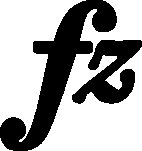



|
b. 4
|
composition: Op. 10 No 2, Etude in A minor
..
In CLI and EE2 the category imprint: Interpretations within context; Differences between sources issues: Errors in EE , Omissions to cancel alteration , Errors of CLI |
|||||
|
b. 4
|
composition: Op. 10 No 2, Etude in A minor
..
In the main text we do not consider category imprint: Differences between sources |
|||||
|
b. 4
|
composition: Op. 10 No 2, Etude in A minor
..
In one of later proofreadings of FE (→GE,EE), Chopin added the slur combining f and e (it is absent in FEcor). Similarly in bars 12 and 39. In Ap the slur is present only in bar 4. category imprint: Differences between sources issues: Authentic corrections of FE |
|||||
|
b. 4
|
composition: Op. 10 No 11, Etude in E♭ major
..
The origin of the additional e category imprint: Differences between sources issues: Errors in FE , Errors resulting from corrections , Terzverschreibung error , Authentic corrections of FE |
|||||
|
b. 4-12
|
composition: Op. 10 No 11, Etude in E♭ major
..
In A in bar 4 (and bar 12, which repeats this bar) the category imprint: Differences between sources issues: Inaccuracies in GE , Inaccuracies in FE , Scope of dynamic hairpins , EE inaccuracies |

 returning d1 on the 4th beat of the bar was deleted, which is a patent error. In
returning d1 on the 4th beat of the bar was deleted, which is a patent error. In  before g
before g written in
written in 
 in chord in
in chord in 
 hairpins embrace with their range the 2nd and 3rd chords in the bar. This is how it was more or less reproduced in
hairpins embrace with their range the 2nd and 3rd chords in the bar. This is how it was more or less reproduced in